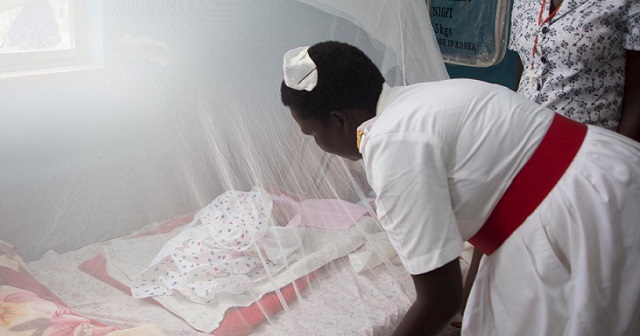
Ministry of Health says only 12 out of 73 districts above epidemic threshold
Kampala, Uganda | RONALD MUSOKE | Uganda’s Ministry of Health has said the country has come out of its malaria epidemic phase it has been under since October, last year. Dr. Jane Ruth Aceng, the Minister of Health said recently that there are just 12 districts out of 73 districts that are still above the threshold for a “malaria epidemic.”
Dr. Jimmy Opigo, the Manager of the Malaria Programme at Uganda’s Ministry of Health recently told The Independent that Uganda is a malaria-endemic country meaning there is stable transmission of the disease throughout the year. An epidemic, however, is said to be happening when the upsurge exceeds a certain level, he said.
The health ministry attributes the success to several interventions that have been deployed to reduce the incidence of malaria in the districts.
Dr. Aceng said during a recent update of the country on the status of malaria in the country that the Indoor Residual Spraying (IRS) and distribution of Long-lasting insecticide treated mosquito nets, the two programmes which were deployed in Busoga, Lango and Bukedi (sub-regions where malaria epidemic was confirmed) have contributed to the reduction of malaria case admissions and deaths.
She said malaria cases at the Out Patient Department (OPD) in the epidemic districts in the sub-regions have fallen from 109,938 in March 2023 to the current 58,822—a drop of 46%. “There has additionally been a reduction in admissions from 6,216 to 3,772 which is a drop of over 40%,” she said, adding that: “The government continues to undertake rigorous and impactful measures to end the epidemic.”
Dr. Aceng further noted that the Incident Management System within the Ministry of Health had also deployed pediatric nurses in 12 epidemic districts to conduct onsite mentorships for emergency triage and treatment for severe cases of malaria—an initiative that has led to reduction in deaths in health facilities and at the community level. She said the ministry intends to scale-up this initiative to an additional six districts that are still reporting cases above the threshold.
Uganda has one of the highest global burdens of malaria cases, with over 90% of the population said to be at risk. The disease is responsible for 30-50% of outpatient visits and 15-20% of hospital admissions and it remains Uganda’s leading cause of deaths, especially among children.
Dr Jonathan Kayondo, a research biologist based at the Uganda Virus Research Institute (UVRI)’s Department of Entomology in Entebbe told The Independent recently that Uganda’s malaria statistics are quite dire.
“We still have about 20 million cases of malaria per year and about 20,000 people die of malaria per year,” he told The Independent.
“If you look at our country, you can say that almost 90% of the population are at risk because of where we are located. For us, it is still a big fight because of its impact. Unfortunately, it mostly affects children and expectant mothers.”
“Those are the people who should form the next generation so if we don’t fight it, our next generation is being undercut right now. It shouldn’t be acceptable that in this day and age, expectant mothers still get malaria and even die.”
Distribution of insecticide treated nets
As one of the most effective ways of preventing malaria, Dr. Aceng said the government will continue distributing and advocating for the proper use of Long-Lasting Insecticide treated Nets (LLIN). The distribution, currently in its second wave is part of the Uganda Malaria Reduction Strategy Plan (UMRSP) geared towards a malaria-free Uganda to enable socio-economic transformation in alignment with Uganda Vision 2040.
Statistics from the Ministry of Health show that the government alongside its development partners have distributed close to 85 million mosquito nets since 2010. Close to 7.2 million mosquito were distributed when the exercise began in 2010 and this was followed by 22 million mosquito nets distributed in 2013/14.
In 2017/18, about 26 million mosquito nets were distributed to all households while another 28 million mosquito nets were distributed to all Ugandans in 2020 registering a coverage of 98% according to the ministry.
Dr. Aceng told the media on July 18 that another 28,500,000 mosquito nets will be distributed this year, thanks to support from the Global Fund and Against Malaria Foundation (AMF). “The overall aim is reducing malaria morbidity and mortality through achieving universal coverage with LLINs,” she said.
Under the campaign dubbed, “Under the Net,” the Ministry of Health will distribute one mosquito net per every two people in a household. It will focus more on behaviour change to achieve net use, care, consistent net use, net repair and repurposing; and tackling the social norms that bar utilization.
The distribution exercise which started in May is scheduled to go on until November, this year, covering the districts of Alebtong, Amolatar, Budaka, Bugiri, Butebo, Kaberamaido, Kalaki, Kibuku, Namutumba, Pallisa, Isingiro, Kakumiro, Lyantonde, Ntoroko, Bukedea and Kibaale under “wave-1.”
Under wave-2, the mosquito nets will be given to households in Buhweju, Kalangala, Kiruhura, Mitooma, Rubirizi, Sheema, Bushenyi, Serere, Tororo, Kween, Namisindwa, Soroti District, Soroti City, Lira District and Lira City. Other districts on the programme include; Mbale District, Kaliro, Sironko, Rakai, Bugweri, Masaka City, Dokolo, Kalungu, Kyotera, Bududa, Lwengo and Nakaseke.
According to Ministry of Health officials, the use of mosquito nets has contributed to the reduction of childhood mortality by up to 25%. Mosquito net use can also reduce the number of uncomplicated malaria episodes in areas of high malaria transmission by half (50%); and have an even bigger impact in areas of medium or lower transmission.
As a result, the Ministry of Health has adopted the policy that all public hospital distribution of mosquito nets should be of LLINs (Long-lasting insecticide treated mosquito nets) rather than other conventional nets.
This is against the background that the Ministry of Health is accelerating the reduction of the malaria burden in high and moderate transmission areas while reducing transmission intensity in all low transmission areas until we get to malaria elimination in Uganda.
According to the World Malaria Report 2022, long-lasting insecticidal nets remain effective and WHO encourages their continued use to prevent malaria. However, the report notes that given these mosquito nets are the main vector control tool, the factors that impair their effectiveness in malaria prevention are important in progress against malaria.
These factors include the physical durability of the net (fabric integrity) and its chemical durability (bio-efficacy, which is the availability of the active ingredient on the surface of the net overtime), operational and behavioural constraints (delivery, access, coverage and acceptability, use, maintenance and retention) and vector dynamics (species biting and resting behaviour).
In sub-Saharan Africa, where most long-lasting insecticide treated nets are distributed, about 590 million insecticide treated nets were delivered to communities in the period 2019-2021. However, in 2021, the estimated percentage of the population with access to a long-lasting insecticide treated net within their household and the percentage of the population sleeping under this kind of net was 54% and 47%, respectively, owing to several factors, including allocation efficiency, retention and use.
According to the report, even when nets are available to household members, they are not used 100% of the time with variation in usage being affected by age, season, gender and malaria risk.
 The Independent Uganda: You get the Truth we Pay the Price
The Independent Uganda: You get the Truth we Pay the Price


